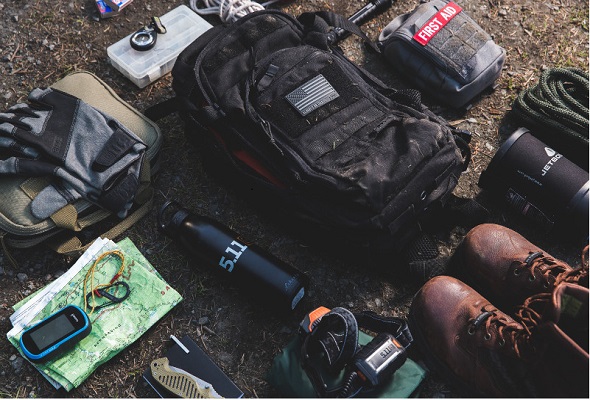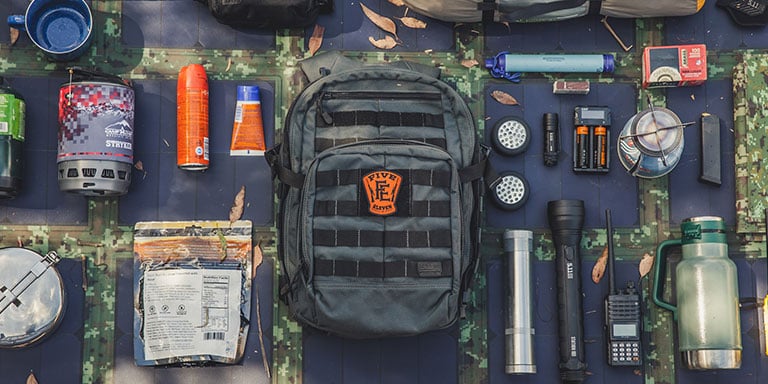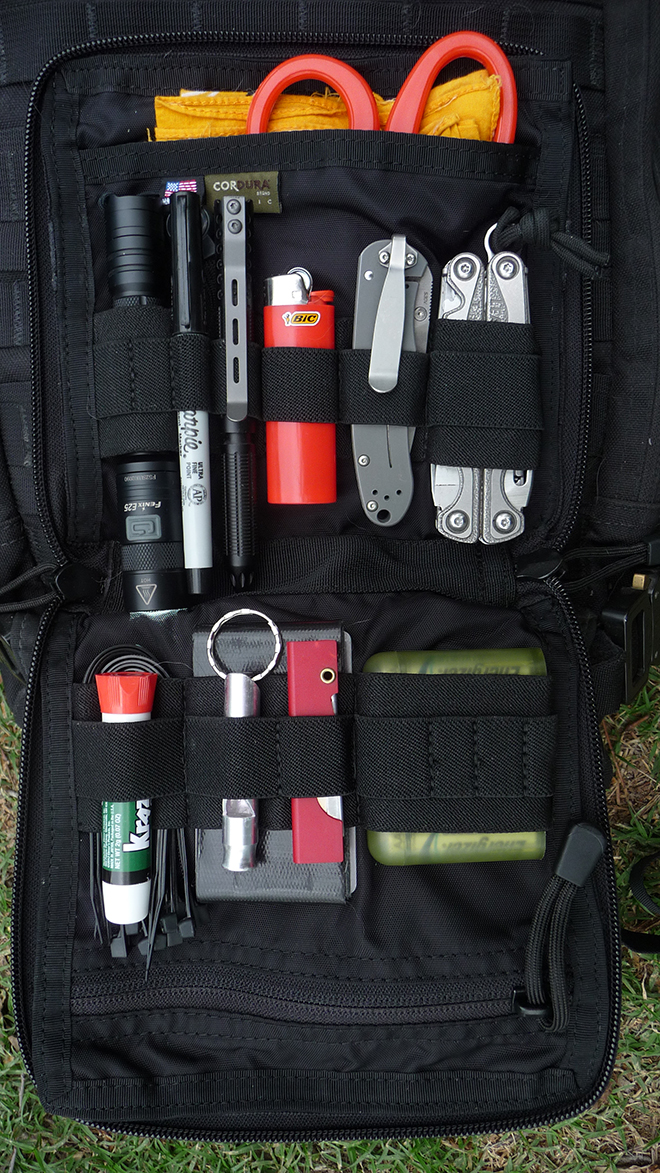Introduction
When it comes to outdoor activities or emergency situations, having the right gear can be crucial. One piece of equipment that has gained popularity among adventurers and survivalists is the tactical backpack. With its durable construction, ample storage space, and versatile features, a tactical backpack is designed to handle a variety of situations. In this blog post, we will take a closer look at the tactical backpack and explore its features, benefits, and potential uses. Whether you are a hiker, camper, or just someone who wants to be prepared for anything, a tactical backpack may be the perfect addition to your gear collection.

What Is A Tactical Backpack?
Are you an avid hiker, camper, or outdoorsman? Maybe you’re a military or law enforcement professional looking for the perfect gear to carry all your essential tools and equipment. No matter what your profession or hobby may be, a tactical backpack is a must-have item for anyone who spends time in the great outdoors. So, what exactly is a tactical backpack? In short, it’s a heavy-duty pack designed to withstand tough conditions and carry a variety of gear. Tactical backpacks are built to be durable, comfortable, and versatile, making them the go-to choice for anyone who needs a reliable pack for their adventures.
Tactical backpacks are typically made from high-quality materials such as heavy-duty nylon or polyester, which makes them water-resistant and able to withstand harsh conditions. Many tactical backpacks also feature MOLLE (Modular Lightweight Load-carrying Equipment) webbing, which allows for easy customization and attachment of additional gear.
One of the key features of a tactical backpack is its organizational capabilities. These packs often come with multiple compartments and pockets, making it easy to keep your gear organized and easily accessible. For example, you might have a designated compartment for your laptop or tablet, a separate pocket for your water bottle, and another area for your first aid kit.
But a tactical backpack isn’t just for storage. Many models are designed with comfort in mind, featuring padded straps and back panels to distribute weight evenly and reduce strain on your back and shoulders. Some backpacks even offer adjustable suspension systems, allowing you to customize the fit to your body type.
When it comes to choosing a tactical backpack, there are a few key factors to consider. First and foremost, you’ll want to think about the size of the pack you need. Do you need a large backpack that can carry all your gear, or will a smaller pack suffice? Consider the type of activities you’ll be doing and the amount of gear you typically carry to help you make this decision.
You’ll also want to consider the features and capabilities of the backpack. Do you need a hydration system, or will you be carrying your own water bottles? Do you want a pack with a built-in rain cover, or are you okay with packing your gear in waterproof bags? Think about your specific needs and choose a backpack that meets them.

What Things To Pack In A Tactical Backpack?
When you’re heading out on an adventure, you want to make sure you’re prepared for anything that comes your way. That’s where a tactical backpack comes in handy. These backpacks are designed to be durable, and comfortable, and have enough space to carry all the essentials you need. But what exactly should you pack in your tactical backpack? Here are the top things to consider packing:
The backpack
A good tactical backpack can make all the difference on the battlefield. It can help you carry all the gear you need, and keep it organized so you can access it quickly in a fight. There are a lot of different backpack options out there, so it’s important to choose one that will fit your needs.
Capacity
One of the first things you need to consider when looking for a tactical backpack is the size or capacity that you need. Tactical backpacks are available in a wide range of sizes, from small packs that will hold nothing more than a few essentials, to large packs that can carry everything you need for an extended camping trip or bug-out situation. The size of the pack you need will depend on how you plan to use it. If you just need something to hold your EDC gear, a small or medium-sized pack will be sufficient. On the other hand, if you need a pack that can double as a bug-out bag, you will need something much larger.
MOLLE
One of the best things about a tactical backpack is the MOLLE webbing system. MOLLE, which stands for Modular Lightweight Load-carrying Equipment, is a system that allows you to attach various gear and pouches to your backpack for easy accessibility. This is extremely useful for serious hikers and campers who need to be able to access their gear quickly and easily.
Pockets and compartments
The backpack has one large compartment and two smaller compartments. The large compartment is big enough to hold textbooks, a laptop, and other daily essentials. The smaller compartments are great for storing smaller items like your phone, keys, or a water bottle. The backpack also has a built-in rain cover for inclement weather.
Hydration packs
Hydration packs are backpacks with a water reservoir or bladder built into them. The water reservoir is usually made of a flexible plastic material that can hold anywhere from 1 to 3 liters of water. The bladder is connected to a drinking tube that runs from the reservoir to the front of the backpack, where it is easily accessible for drinking.
The contents
A Tactical backpack is a multipurpose backpack designed to offer easy storage and transport of essential equipment. Tactical backpacks are made to offer more durability and comfort than a standard backpack. When looking for a tactical backpack, there are a few key features you should look for comfort, capacity, and compartments.
Water
Water is the most important thing you can pack in your backpack, and you should always carry more than you think you will need. A good rule of thumb is to carry at least 1 liter of water per hour of hiking, plus an extra liter for emergencies. If you are hiking in a hot climate or at a high altitude, you will need even more water.
You can carry water in bottles or a hydration system. Hydration systems are backpack-sized bladders that have a hose that goes over your shoulder, so you can drink hands-free. Both have their pros and cons, so it’s a good idea to try both and see what works best for you.
There are also water filters and purifiers available that can make contaminated water safe to drink. These are good options if you are hiking in an area where clean water is not available.
Food
No matter where you are going or for how long, you need to bring food. Pack enough non-perishable food to last each member of your group for at least three days, and try to include a variety of different items such as
- Canned meats
- Fruit cups
- Granola bars
- Peanut butter
- Trail mix
- Jerky
- Canned soup
- Canned vegetables
Clothing
The first and most important thing to pack in your bug out bag is clothing. Depending on the climate you live in, your needs will vary. But in general, you should pack enough clothing to keep you warm and dry for at least three days.
Start with a good pair of hiking boots or shoes, and pack extra socks. A hat and gloves are also essential, as are a few changes in clothes. Jeans are a good choice for pants, as they are durable and will protect you from the elements. A jacket or coat is also a must, as well as a rain poncho or other waterproof outer layer.
For tops, pack a mix of long-sleeved shirts and sweaters or sweatshirts. Again, jeans are a good option for bottoms. Underwear and socks should also be packed, along with pajamas if you plan on sleeping during your evacuation.
Shelter
Shelter is one of the most important things to have in your backpack, especially if you are planning on spending any time in the wilderness. A good shelter will protect you from the elements and keep you warm and dry. There are a variety of different types of shelters available, so be sure to choose one that is appropriate for the climate and terrain you will be traveling in.
Some of the most popular types of shelters include:
-Tents: Tents are a great option for both solo travelers and groups. They offer protection from the sun, wind, and rain, and can be easily set up and taken down. Be sure to choose a tent that is appropriate for the number of people you will be traveling with.
-Tarps: Tarps are a lightweight and versatile shelter option. They can be used as standalone shelters or as an addition to a tent or other shelter. Tarps come in a variety of shapes and sizes, so be sure to choose one that is appropriate for your needs.
-Hammocks: Hammocks are a great option for solo travelers who want to save weight and space in their backpacks. Hammocks can also be used as an addition to a tent or other shelter for added protection from the elements.
First aid
A good trauma kit is paramount for any backpack. A basic individual trauma kit (sometimes called an IFAK) should have, at a minimum:
-A tourniquet
-Quick clotting gauze or hemostatic agent
-Trauma dressing
-Mylar blanket
These items will allow you to address the three most common combat wounds: bleeding, shock, and hypothermia. You may also want to consider adding other items to your trauma kit, such as:
-Aspirin
-Antibiotic ointment
-Burn gel
-Splinting materials
-Personal medications
Tools and equipment
In order to roast coffee at home, you will need some basic equipment. Roasting coffee beans release oils and aromatics that give the beans their flavor, and you will need a way to release these without burning them. A simple popcorn popper will do the trick, or you can purchase a roasting machine.
You will also need a baking sheet to catch any chaff that comes off the beans during roasting. This is the papery skin of the coffee bean that needs to be removed before brewing. It is important to use a dark-colored baking sheet so you can see the color of the beans while they are roasting. You may also want to line the baking sheet with foil for easy cleanup.
Finally, you will need a coffee grinder to grind your roasted beans. A Blade grinder is less expensive but will not give you as even a grind as a Burr grinder. If you are using a popcorn popper to roast your beans, you can probably get away with using a blade grinder because the beans will be relatively uniform in size after roasting.
Navigation
A good tactical backpack should have a maps pocket, as well as compasses, GPS devices, and other navigation tools. This way, you can always find your way, even if you’re in unfamiliar territory.
Communication
One of the most important things to keep in your backpack is some form of communication. A simple cell phone can suffice in many cases, but if you are planning on being in an area with no service, or if you are going to be engaging in activities that may damage your phone, you should consider bringing a handheld radio. A handheld radio will allow you to stay in communication with other members of your party, as well as give you access to emergency channels.
Other considerations

In addition to the main pack, you might want to include a “fanny-pack” or day pack that can be used for shorter hikes, carrying water and snacks, or as a “pillow” at night. A fanny pack is especially handy if you’re doing a lot of bushwhacking or rock scrambling, whereas a full backpack can be cumbersome.
Weight
Weight is an important factor to consider when choosing coffee beans. Depending on the brewing method, you will need different weights of coffee. For example, if you are using a drip coffee maker, you will need between 15 and 18 grams of coffee per cup. If you are using a French press, you will need between 30 and 40 grams of coffee per cup.
Climate
Climate plays a huge role in what you pack in your tactical backpack. Obviously, if you are deploying to a cold-weather environment, you will need to pack accordingly. Some things to consider would be extra socks, a hat, gloves, and a heavy coat. Conversely, if you are deploying to a hot climate, you will want to pack light clothing that wicks away sweat and plenty of sunscreens. You will also want to make sure you have plenty of water. No matter the climate, you always want to be prepared for the worst-case scenario, so make sure you pack extra food and water no matter where you are going.
Terrain
Coffee grows on mountainsides, producing different results depending on the angle of the slope, the type of terrain, the location, and the altitude. The rainforests of Central and South America produce coffee with distinctively bright acidity, while African coffees tend to be more full-bodied. Indonesian coffees are known for their earthy flavor profile.
How To Properly Pack a Tactical Backpack?
Tactical backpacks are a must-have for every survivalist, hiker, or camper. These bags are specifically designed to carry all the essentials that you might need in the great outdoors. However, packing a tactical backpack can be a daunting task, especially if you’re new to it. In this section, we’ll guide you through the process of packing your tactical backpack properly. Follow these steps, and you’ll be able to pack your bag like a pro.
1. Figure out what you need
The first step in packing your tactical backpack is to figure out what you need. Make a list of all the items that you’ll need for your trip. This will ensure that you don’t forget anything important.
Your list should include basic essentials like food, water, shelter, and clothing. Additionally, you’ll need to pack other items like a first aid kit, a navigation tool, and a multi-tool. Depending on the nature of your trip, you might need other items like a sleeping bag, a stove, or a tent.
2. Pack the bottom of your survival backpack
Once you’ve made a list of all the items you need, it’s time to start packing your bag. The first rule of packing a tactical backpack is to pack the heaviest items at the bottom. This will help distribute the weight evenly across your back, making it easier to carry.
Start by packing your sleeping bag or any bulky items at the bottom of your bag. This will create a solid base for the rest of your gear. Next, pack your food and water supplies on top of the bulky items.
3. Load the middle section of your backpack
The middle section of your tactical backpack is where you’ll pack most of your gear. This includes your clothing, your first aid kit, and your navigation tool. Make sure to pack your clothing in a waterproof bag to keep it dry in case of rain.
Organize the middle section of your backpack by using packing cubes or compression sacks. This will help keep your gear organized and easily accessible.
4. Fill in the top layer of your tactical bag
The top layer of your tactical backpack is where you’ll pack smaller items that you’ll need to access quickly. This includes items like your phone, your wallet, and your sunglasses.
Make sure to pack these items in a separate compartment for easy access. You can also pack a rain jacket or a poncho in the top layer in case of rain.
5. Make use of the outside compartment, pockets, and attachments
Tactical backpacks come with multiple compartments, pockets, and attachments. Make use of these to pack items that you’ll need to access quickly.
For example, you can use the side pockets to store your water bottles or your trekking poles. You can also use the MOLLE webbing to attach other items like a flashlight or a knife.
In conclusion, packing a tactical backpack requires some planning and organization. By following these steps, you’ll be able to pack your bag properly and ensure that you have all the essentials you need for your trip. So, go ahead and pack your tactical backpack like a pro!
If you cannot find an answer on our website to your question, feel free to message or call us!
